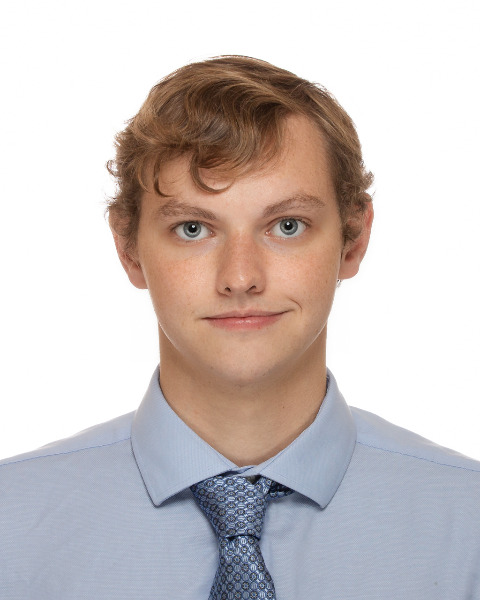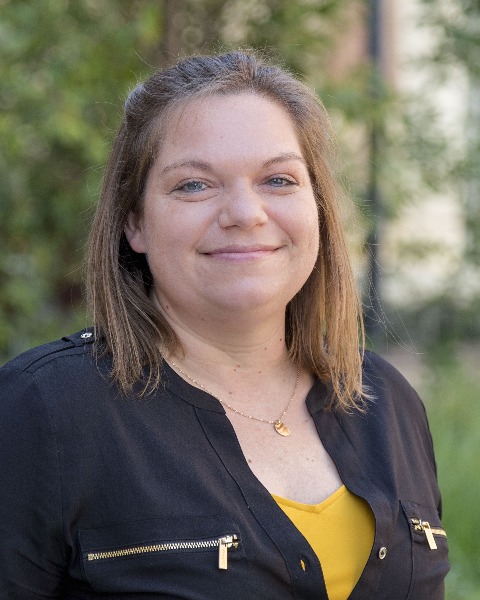Orthopedic and Rehabilitation Engineering
(H-284) Investigating the Role of Focal Adhesion Kinase in Hierarchical Collagen Fiber Formation for Musculoskeletal Repair

Tristan Strayer (he/him/his)
Graduate Assistant
Virginia Commonwealth University
Richmond, Virginia, United States- LT
Leia Troop (Any)
Graduate Student
Virginia Commonwealth University
Richmond, Virginia, United States 
Jenny Puetzer (she/her/hers)
Assistant Professor
Virginia Commonwealth University, Virginia, United States
Presenting Author(s)
Co-Author(s)
Primary Investigator(s)
Collagen fibers are the primary source of strength in tissues throughout the body, particularly in tendons and ligaments. Cells organize these fibers hierarchically, assembling them from nanometer-wide fibrils to larger fibers and fascicles, growing in size with mechanical demand.1,2 These fibers do not regenerate after injury, nor in engineered replacements, resulting in limited repair options.1-3 There is a need to better understand how cells form hierarchical fibers to better engineer functional replacements.
It is well established that mechanical cues, including cellular contraction and external loads, are critical to cell-driven fiber and fascicle development.2 While, cellular contraction forces, regulated via integrins, focal adhesion kinase (FAK), and the actin-cytoskeleton network, are established to play a major role in fibril alignment,4,5 their role at the fiber and fascicle length-scale are largely unknown.5,6 Recently, we developed a novel culture system that guides Anterior Cruciate Ligament (ACL) fibroblasts in high-density collagen gels to produce aligned collagen fibrils by 2 weeks, which mature into native-sized fibers and fascicles by 4 and 6 weeks (Fig 1A&C).1 This system provides a unique ability to dissect cellular mechanotransduction during hierarchical fiber formation. The objective of this study is to evaluate how mechanical cues translated via integrin-cytoskeleton contraction regulate cellular development of hierarchical fibers by inhibiting FAK while cells develop aligned fibrils and fibers in our system. We hypothesize cellular sensing via FAK plays a significant role at all levels of collagen organization and blocking it while fibrils and fibers are forming will significantly reduce collagen organization and tissue mechanics.
Materials and Methods::
To form constructs, rat tail type I collagen and neonatal bovine ACL fibroblasts were mixed and cast into 1.5 mm thick sheet gels at 20 mg/mL collagen and 5x106 cells/mL, as previously described.1 Rectangles (8 x 30 mm) were cut from gels, divided between groups, and cultured clamped in our culture device for up to 4 weeks. To investigate the role of FAK during fibril formation, constructs were treated with 10 µM PF-573288 (FAK-I)4 from 0-2 weeks of culture to inhibit FAK activity during fibril formation. To investigate the role of FAK during fiber formation, constructs were cultured clamped in standard DMEM media for 2 weeks to allow aligned fibrils to form, and then treated with 10 µM PF-5732884 from 2-4 weeks to inhibit FAK activity during fiber formation. Controls consisted of a vehicle control treated with DMSO for each condition, and constructs cultured in standard DMEM for the duration of culture. Post-culture, constructs were photographed and weight to determine degree of contraction, and sectioned to evaluate organization, composition, and tissue mechanics as previously described.1 Confocal reflectance was performed to analyze collagen organization. Tissue mechanics were analyzed via tensile tests at 0.75% strain/sec to failure. DNA, glycosaminoglycans (GAGs), and Collagen content, were measured via Picogreen, DMMB, and hydroxyproline (Hypro) assays and are reported per construct to account for differences in construct size. All data are mean ± SD. Statistical analysis was performed by 2-way ANOVA with Tukey’s post-hoc (p< 0.05 significant).
Results, Conclusions, and Discussions::
We first evaluated whether cells could still form aligned fibrils in our system if FAK was inhibited during the first 2 weeks. Confocal revealed FAK-I constructs had significantly reduced fibril formation and alignment by 2 weeks, compared to control DMEM and DMSO constructs (Fig 1C). Similarly, this reduction in organization resulted in FAK-I constructs having significantly reduced tensile mechanics at 2 weeks compared to DMSO controls (Fig 1D), and little-to-no contraction of the construct (Fig 1E). We then evaluated the role of FAK during larger fiber formation by dosing with FAK-I between 2-4 weeks while cells form larger fibers (Fig 1B). Interestingly, we found FAK-I had little-to-no effect on fiber formation, and constructs dosed with FAK-I were able to form similar sized and organized collagen fibers as DMEM and DMSO controls (Fig 1C). Further, there was no significant difference in tissue tensile mechanics between groups.
Interestingly, we found that dosing with FAK-I resulted in a significant reduction in DNA, regardless of organization level (Fig 1E). This was unexpected since the inhibitor concentration used has been used in multiple studies with no report of cytotoxicity.4 On-going studies are evaluating additional FAK-I concentrations, as well as live/dead to better understand whether the reduction in DNA is due to cell death or cell wash-out from the construct. Despite reduced DNA, FAK-I constructs and controls had similar significant increases in GAG (data not shown) and collagen concentration at 4 weeks (Fig 1E). Interestingly, FAK-I constructs did not have a similar reduction in collagen as vehicle controls at 2 weeks, which may suggest a decrease in cellular turnover of collagen during fibril formation with FAK-I. Collectively, this data suggests cellular connection to the ECM via FAK-cytoskeletal signaling is key to early stages of hierarchical formation, but plays a smaller role in later stages. On-going work is evaluating the effect of FAK-I during fascicle formation between 4-6 weeks. Due to the large role of mechanical cues in cell-driven hierarchical fiber formation, understanding key mechanotransduction pathways that regulate cellular formation of fibers is critical to developing therapies to regenerate musculoskeletal tissues after injury or in engineered tissues.
Acknowledgements (Optional): :
References (Optional): :
1. Puetzer+Biomat 2021; 3. Connizzo+Matrix Bio 2013; 2. Galloway+J Bone Surg Am 2013; 4. Rajshankar+J Cell Physiol 2020; 5. Lavagnino+ JOR 2015. 6. Han+Eur Cell Mater 2014
